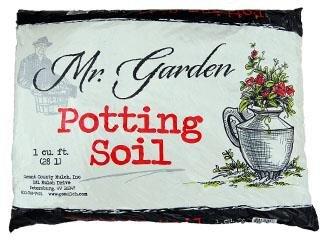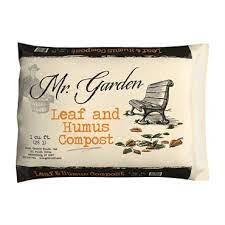- Compaction: Good soil is loose and crumbly because it has lots of air spaces. Plant roots are able to penetrate soil deeply for extended drought resistance and stability. Air is also essential to the micro-life that lives on its organic content and processes its nutrients to create fertility. Typically soil in a home landscape is compacted so to reduce compaction, regularly add humus by spreading mulch or organic material on bare soil in beds and under trees and shrubs. Dig in compost, peat moss or the like into garden beds when planting to improve aeration.
- Sandy soil: Sandy soil has large particles with large air spaces between them. Therefore, it drains so quickly that it dries out quickly. Also, water-soluble nutrients leach out rapidly before the plants can use them. Humus incorporated into sandy soil acts like a sponge, absorbing and holding moisture and any nutrients dissolved in it. Replenish the humus content of sandy soil at every opportunity.
- Clay soil: Clay soils are so thick because they have small particles with correspondingly small air spaces between them. They tend to stick together and cause water to fill up the air spaces. Since moisture does not drain from this soil well, plant roots rot. Adding humus to clay soils discourages the small particles from sticking so tightly. They aggregate into larger clumps creating larger spaces that drain more easily and hold air to improve soil texture.
- Fluctuating PH levels: The acidity or alkalinity of soils, expressed as pH, affects how accessible their nutrients are to plants. Reduced acidity (pH higher than 8.0) inhibits the uptake of iron, boron, copper and other elements necessary for plant health. Excessive acidity (pH lower than 6.0) discourages plant absorption of other nutrients. Alter pH levels by adding either sulfur to increase acidity or limestone to reduce acidity in amounts indicated by soil test results. Because humus buffers soil against changes in its pH, adding lots of organic matter to the soil will help maintain desirable pH levels.
- Pest insects, disease pathogens in soil: Soil rich in humus is alive. It supports active microorganisms to process nutrients and harbors beneficial macro-organisms such as ants and ground spiders that prey on soil-dwelling pest larvae and eggs. Humus creates a soil environment that supports beneficial nematodes and also bacteria such as milky spore that homeowners introduce into lawns to combat white grubs. Many other resident microbes attack and control disease pathogens that lurk in the soil. Topdressing and mulching lawns and gardens with organic material such as chopped leaves, compost or shredded bark products discourage soil pest problems.
- Infertile soil: Soil becomes sterile over time as its humus content is reduced by hot weather, removal of topsoil, or intense cultivation without replacement of organic matter. The number and activity of micro-organisms in the soil is depleted. In their absence, the production of nutrients in the soil is severely curtailed and it becomes sterile. While fertilizer provides nutrients to plants, it does not solve a soil fertility problem. Supporting resident micro-life in the soil is the long-term solution. Topdressing lawns and perennial beds with humus and incorporating it into cultivated soil every year provides a home for these organisms so they can assure soil fertility.
Source: National Garden Bureau, ngb.org
Please stop by and chat with one of our associates to determine the best way to improve your soil and keep your plants happy.



















